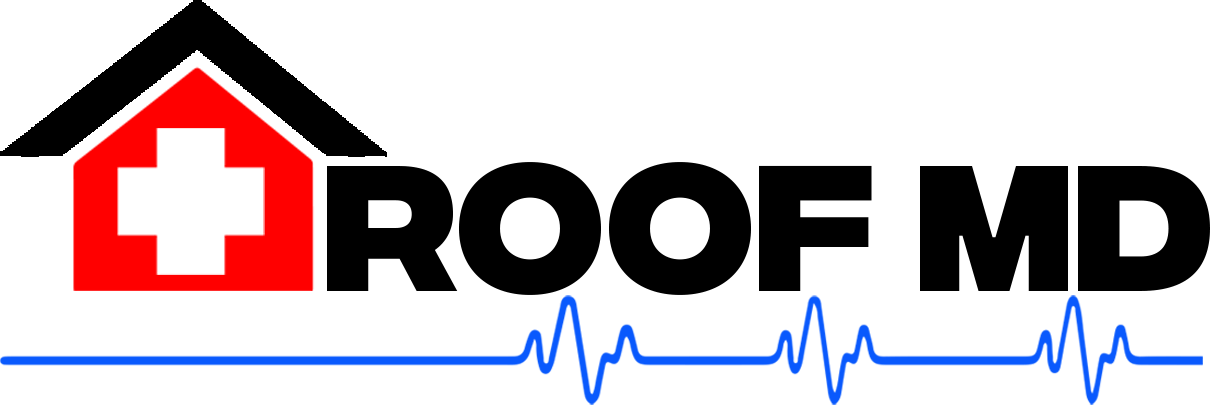Top Signs of Roof Storm Damage & When to file an insurance claim
A storm can inflict significant damage on your roof; however, assessing the full extent of the damage can be challenging. The key to managing these situations lies in rapidly identifying the issues and then contacting a professional roofer. Seek someone with expertise in handling storm damage and navigating homeowners insurance claims to restore your roof to its prime condition.
In this blog post, we will explore the primary indicators of roof storm damage and the subsequent steps to take. Additionally, we will discuss your options regarding roof insurance claims to secure the necessary assistance.
TABLE OF CONTENTS:
- Damaged Gutters
- Granules in Gutter
- Broken, Brittle Or Missing Shingles
- Impact Marks on Roof
- Bent or Missing Roof Flashing
- Fallen Trees
- Damage or Gaps in Chimney Caps
- Light in Attic or Attic Hatch
- Heavy Leak Right After Storm
- Important Notes for Roof Storm Damage Claims
- Homeowners Insurance Claims for Roofs
DAMAGED GUTTERS
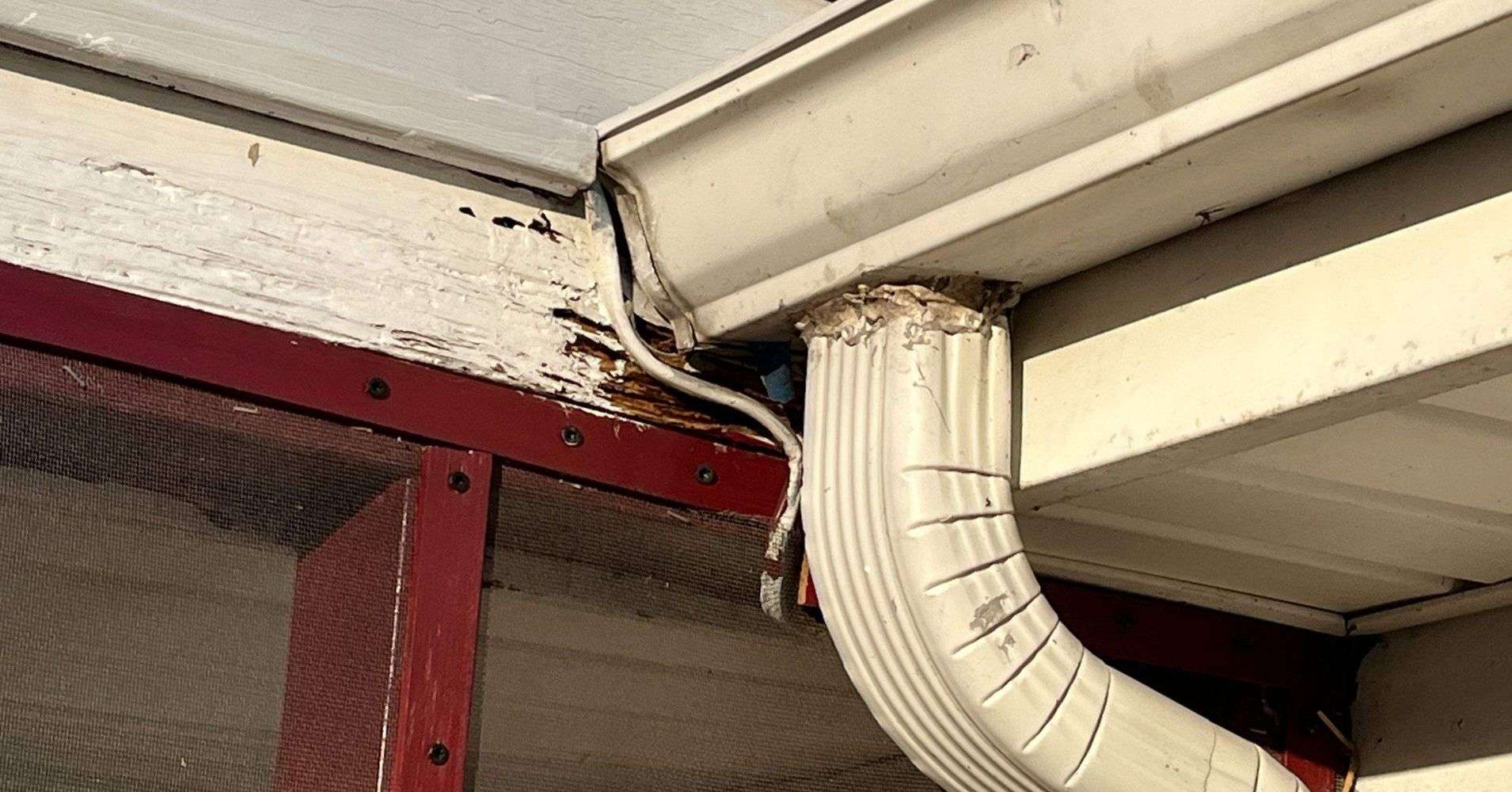
While damage from neglect is not covered, your policy may include protection against hail dents or wind damage to your gutters. It’s crucial for homeowners to inspect their gutters for roofing damage signs after any storm. Ensure each gutter is securely fastened and cleared of all debris. Leaves, branches, and other materials can accumulate, weighing down gutters, causing them to detach from the roofline, and potentially leading to leaks. Regular maintenance to remove this debris is vital for the health of your home’s roofing system. Beyond the hazard fallen gutters pose to your family, the additional weight from accumulated dirt and leaves can exacerbate the strain on your roof.
This strain, especially when combined with wind or hail damage, can further stress the gutters, leading to detachment and creating possible entry points for water. If you observe fallen or damaged gutters post-storm, seeking immediate assistance from a roofing professional is advisable.
Granules in gutters
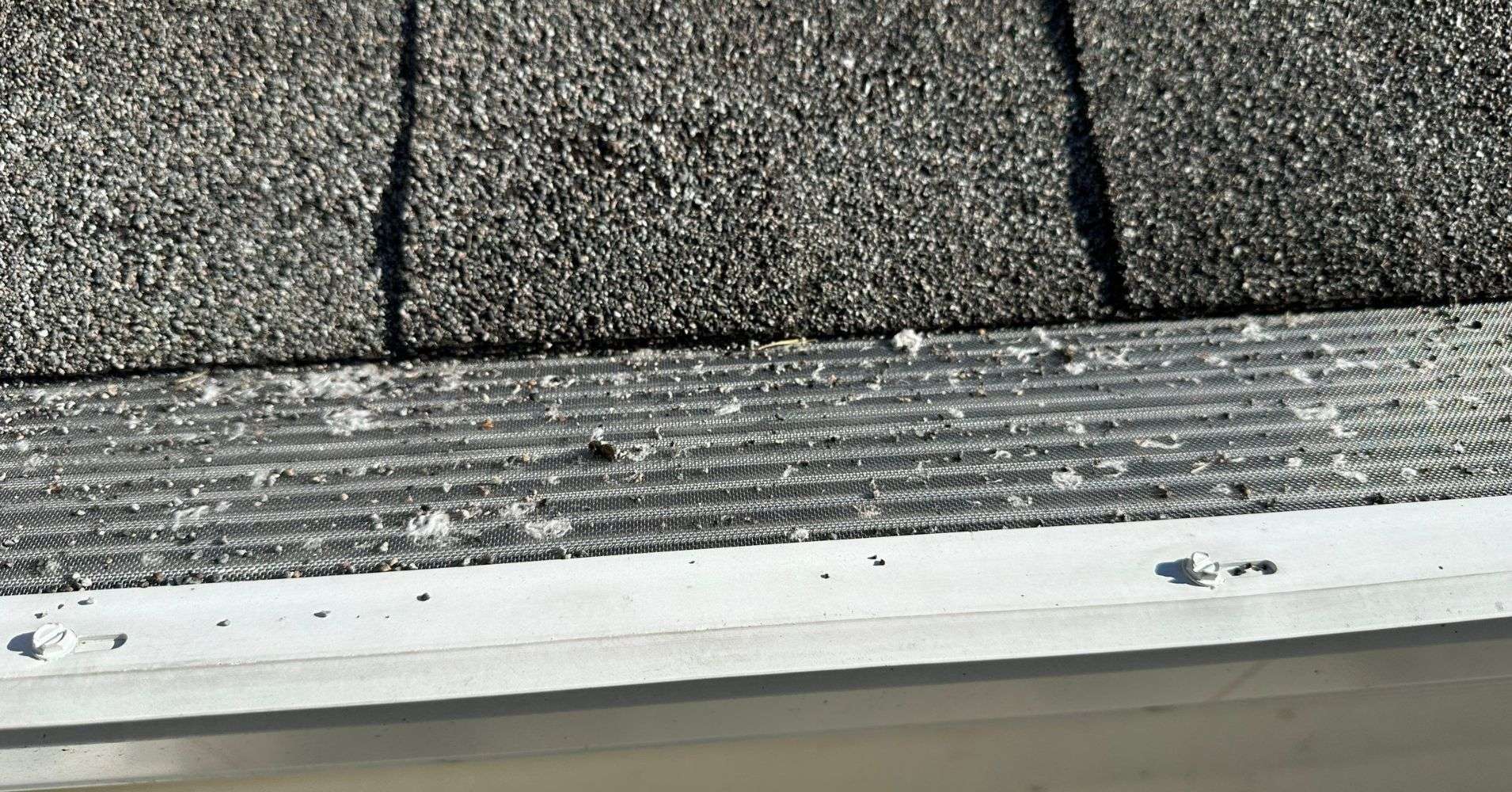
Granules are an essential component of asphalt shingles, providing them with their protective qualities. Over time, or due to storm damage, these granules can wear off and find their way into your gutters or scatter across your roof. The loss of granules compromises the shingles’ ability to protect your home, potentially leading to leaks. This deterioration can be identified in two ways: a noticeable silver sheen across the roof or an accumulation of granules in your gutters. Observing a significant quantity of these granules after a storm could indicate that your shingles are no longer effective in safeguarding your roof.
Broken, brittle or missing shingles
High winds, hurricanes, and significant storms possess the capability to remove shingles from your roof, leading to potential vulnerability. The absence of shingles creates an entry point for water, potentially resulting in considerable damage. Even without shingle loss, exposure to storms or high winds can cause them to crack or become brittle, compromising the roof’s ability to prevent moisture penetration. Over time, this may lead to leaks, necessitating costly repairs or even a complete roof replacement. In cases of missing or damaged shingles post-storm, it’s possible that your roof or home insurance policy may provide coverage. Engaging a professional to assess the damage and liaise with your insurance provider is advisable, ensuring optimal repair solutions are achieved.
IMpact Marks on Roof
Severe weather, particularly hail storms, can leave distinct damage on your shingles. These marks penetrate the asphalt layer, potentially allowing water to infiltrate the underlayment or the structural elements of your home. Hail damage is a prime example of storm damage that may qualify for an insurance claim and should be inspected by a professional immediately following the storm.
BENT OR WARPED ROOF FLASHING
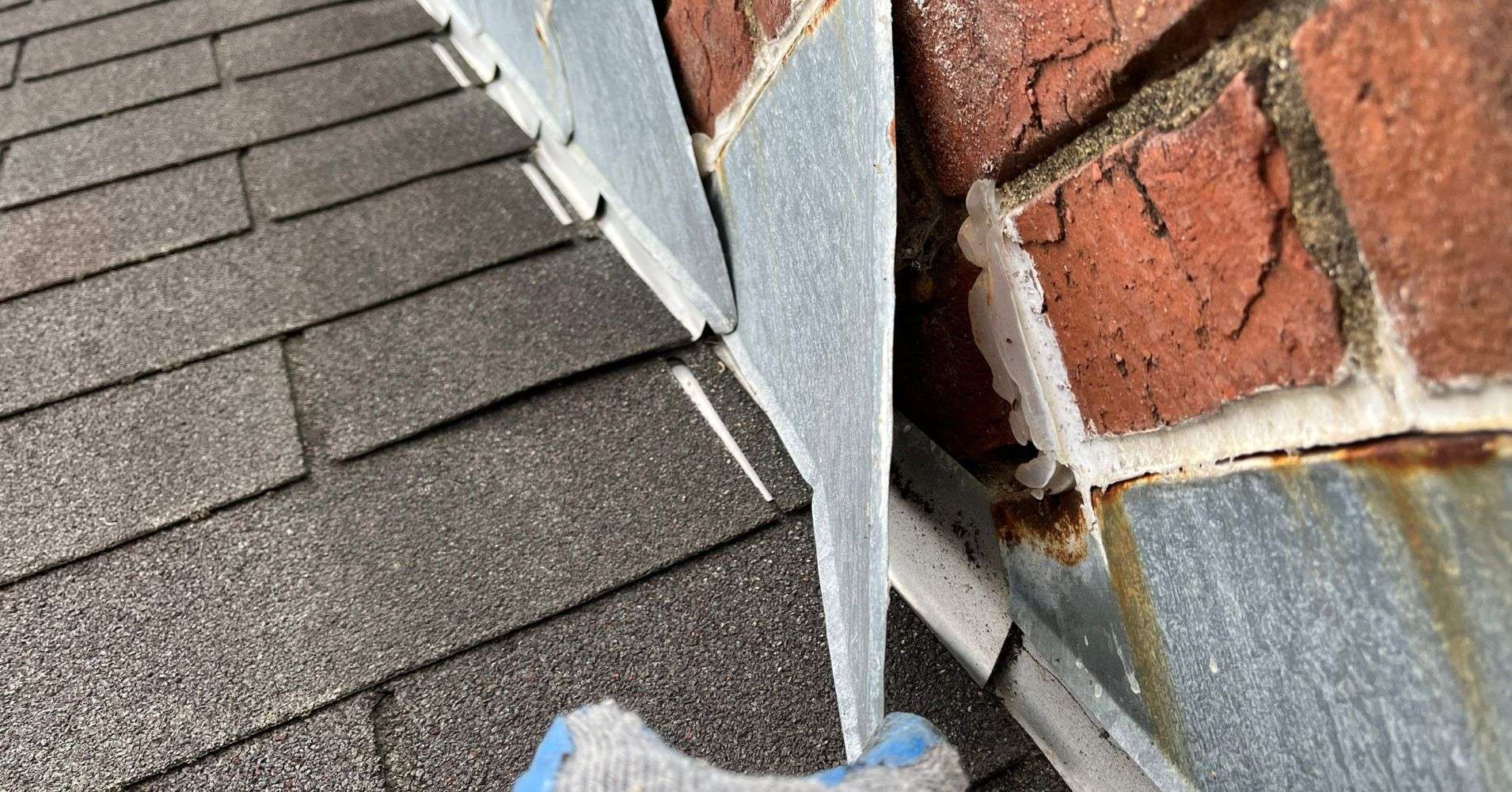
One of the most telling indicators of storm damage to a roof is the bending or distortion of flashing. Such damage can result from high winds, severe temperatures, or substandard installation. Flashing consists of metal strips designed to protect the joints and seams of your roof. When these strips are damaged or dislodged, they leave your roof exposed to water and other damaging elements. Flashing is crucial and is found throughout your roof, including around ventilation pipes, chimneys, skylights, and at the intersections of roof surfaces. Spotting any bent or distorted flashing should prompt immediate action to mitigate further damage.
FALLEN TREES
It may seem like common sense, but encountering any issues with a tree near your home can serve as a warning sign of potential damage to your roof. It’s a misconception that only large trees pose a threat; in reality, even small branches that fall due to wind or a storm can lead to significant problems. These seemingly minor incidents can cause shingle damage, leading to a compromised roof structure. Additionally, gutters can become blocked or damaged, which, in turn, can lead to leaks and water damage inside your home. It’s crucial to regularly inspect both trees and the roof to prevent these issues and maintain your home’s integrity.
Damages or gaps in chimney caps
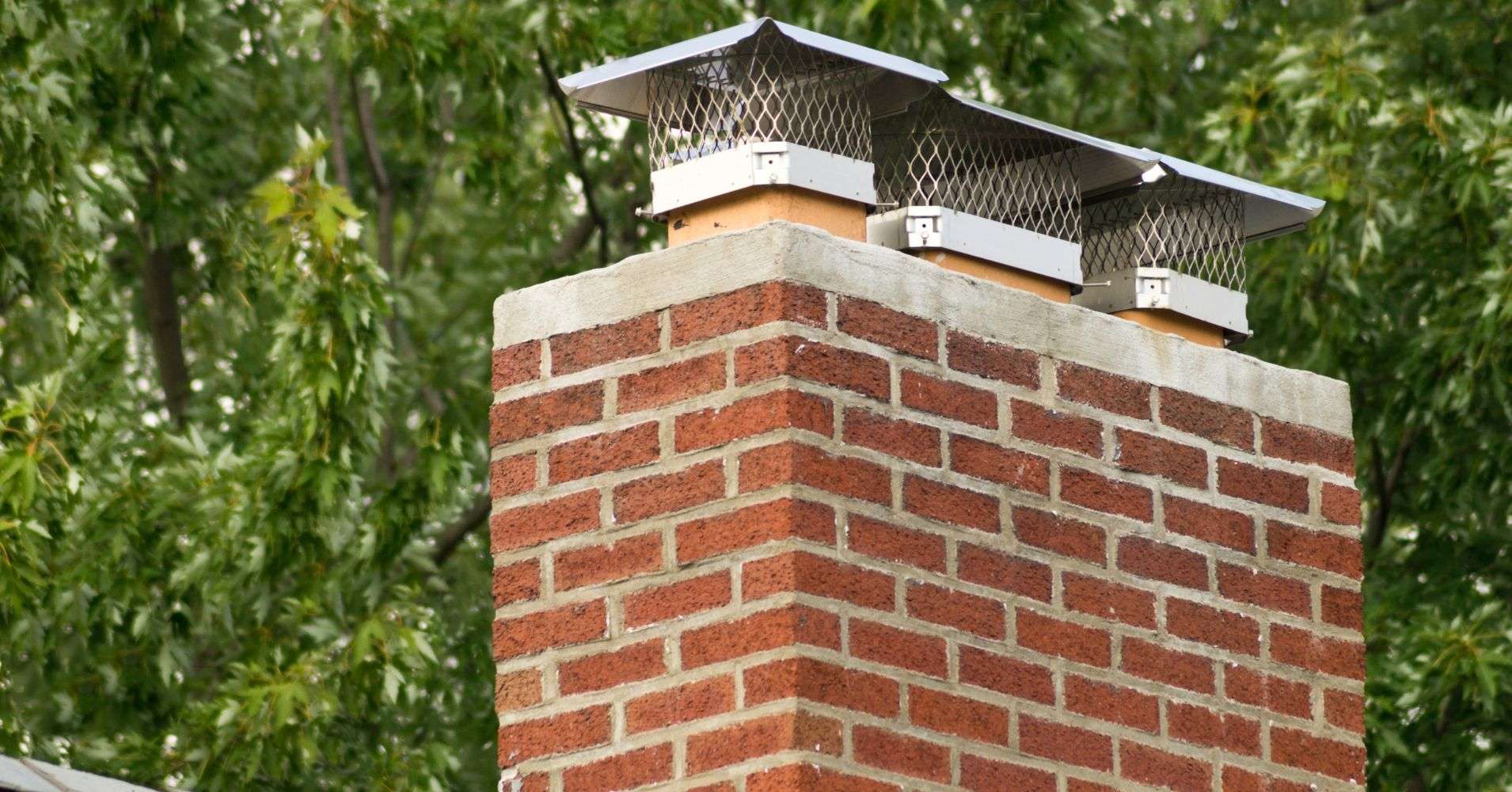
Following inclement weather or strong winds, it’s crucial to check the chimney cap for damage. This cap serves as a guard, sitting atop your chimney to block debris, animals, and water from entering your home. Damage to the cap may also suggest potential harm to your roof. Storms can cause gaps and cracks, making regular inspections of your fireplace flue essential. This is particularly important for older brick chimneys, which are more susceptible to small leaks and porousness. If you detect any damage or gaps, it’s wise to contact a professional for a prompt inspection. Doing so not only prevents further damage but also secures your safety.
Light in Attic or Issue in attic hatches
The presence of light in the attic is a telltale sign of storm damage. This phenomenon indicates a breach in the roof’s integrity, be it through the shingles or the roofing structure itself, allowing light—and consequently, water—to infiltrate in significant quantities.
An attic hatch, the ceiling portal granting access to your attic, is an area that should not be overlooked. A newfound leak near this hatch is a strong indicator of roof damage. While it might seem minor, inspecting the vicinity of the attic hatch is a crucial step in evaluating storm-induced roofing damage that is often missed. To prevent moisture, wind, and other damaging elements from entering, attic hatches must be securely sealed. Before venturing into the attic for a closer inspection, ensure the area around the hatch is tightly sealed. Discovering any gaps between the hatch and its frame could signal severe roofing problems, necessitating immediate professional intervention.
Heavy Leak Right After a Storm
It might seem apparent, but many overlook leaks and later pay a significant price. Roof leaks are clear signs of damage and can foster mold growth. If you suspect your roof has a leak, be vigilant for any visible water damage signs mentioned in this article. It’s crucial to emphasize that a leak indicates a failure or damage to your roof’s various protective systems, which your home insurance might cover. If you encounter roof storm damage, it’s imperative to contact a roofing contractor experienced in storm damage and knowledgeable about homeowners’ insurance claims. They can conduct an independent inspection and advocate for you throughout the process.
Important Notes for Homeowners Insurance Claims for Roofs
- Not every type of damage is covered by your homeowner’s insurance policy and every policy is different. Make sure you read yours carefully.
- Insurance companies are sticklers for procedure so make sure you follow their procedures when filing a claim.
- Always work with a third-party roofing contractor to keep the insurance honest. Make sure they’re familiar with insurance claims so they can be your advocate.
- You don’t have to do it alone. A good contractor will help be the middleman with correspondence and inspections.
Homeowners Insurance Claims for Roofs
Once you realize your roof has sustained damage from a storm, it’s essential to engage a professional roofing contractor for an inspection. A qualified roofer will visit the site to assess the damage and determine whether your roof is eligible for an insurance claim, providing a comprehensive estimate for the necessary repairs. There are several crucial reasons for obtaining an independent inspection:
- It ensures an unbiased evaluation of the roof to compare with your insurance adjuster’s assessment of the damage.
- An experienced professional acts as a mediator, presenting all necessary evidence to your insurance company to secure the coverage you deserve.
- During any negotiation phase with your insurance company, you will need someone to advocate on your behalf and, if necessary, conduct further tests to strengthen your claim.
Addressing roof storm damage with the assistance of a skilled roofer can transform a potentially nightmarish experience into a manageable process. Without such expertise, you are at the mercy of the insurance company, which may be motivated to minimize the value of your repair claim.
Have Roof Storm Damage? Now What.
If your roof has suffered from recent storm damage, you might be unsure of the next steps to take. Handling storm damage to your roof can feel overwhelming and stressful, yet it’s critical to respond promptly to mitigate further damage and ensure your home’s safety. It’s advisable to seek a professional and highly-rated roofing contractor experienced in dealing with storm damage and proficient in navigating insurance claims.
For residents of Tennessee or Georgia, Roof MD is at your service. We are skilled in using Xactimate for insurance claim estimates and have successfully advocated for many clients, ensuring they receive the compensation they deserve for speedy home repairs. You don’t have to face this challenge alone. Visit our insurance claims help page today to learn more today.
